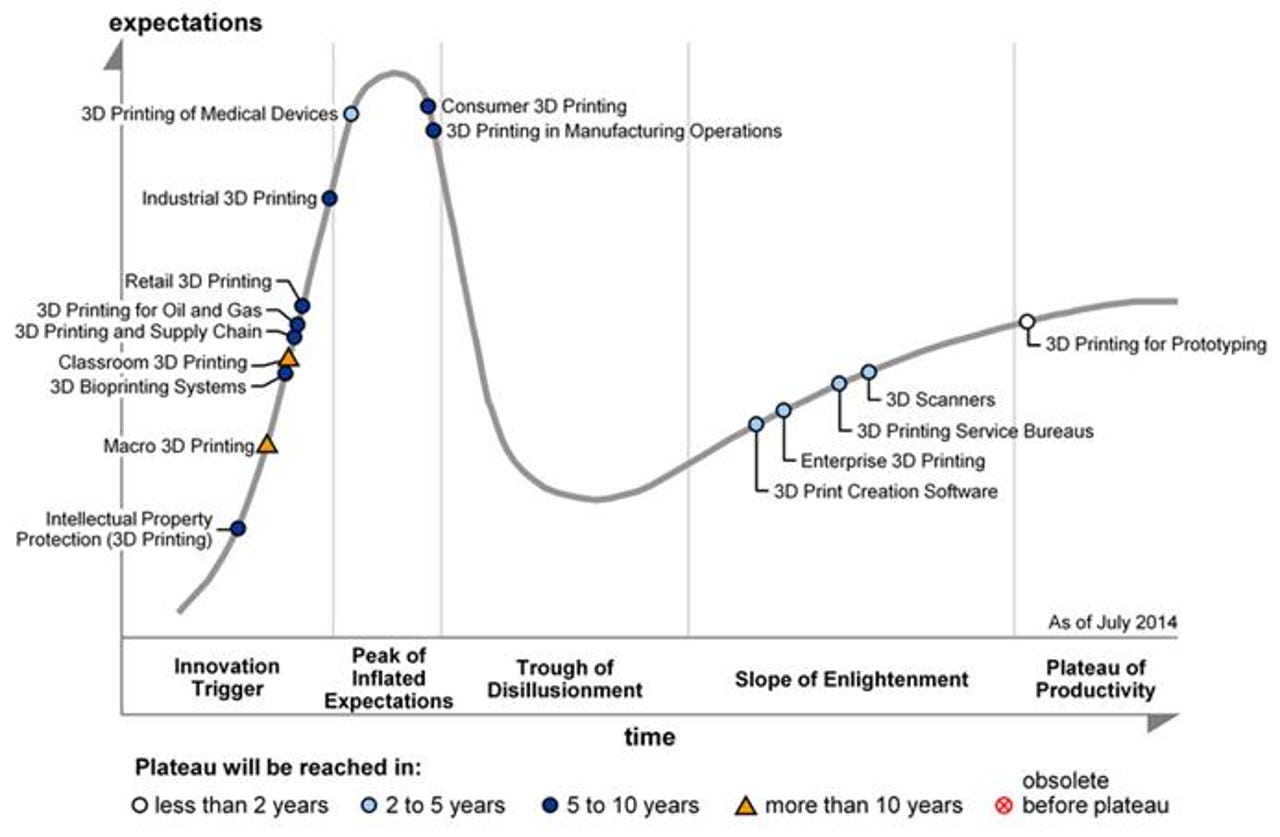Excited about 3D printing at home? Don't hold your breath, warns Gartner

Consumers anxious to sample the delights of 3D printing are going to have to wait, according to analyst Gartner which says it is more than five years away from mainstream adoption.
While some uses for 3D printing — rapid prototyping, for example — have already hit the mainstream, other uses such as 3D printing on medical devices and industrial 3D printing are still a way off.
Gartner research vice-president Pete Basiliere said: "Today, approximately 40 manufacturers sell the 3D printers most commonly used in businesses, and over 200 startups worldwide are developing and selling consumer-oriented 3D printers, priced from just a few hundred dollars.
"However, even this price is too high for mainstream consumers at this time, despite broad awareness of the technology and considerable media interest."

Based on its research, Gartner believes that it has identified "two main themes" at work in the field of 3D printing.
Firstly, the market for enterprise 3D printing and the consumer market are only superficially similar, Gartner reckons. Organisations are willing to experiment with consumer 3D printing devices because they are cheap but they quickly learn that much more professional, and therefore expensive, devices are needed if 3D printing is to be used in business on a daily basis.
Secondly, 3D printing isn't one technology but "seven different ones" Gartner argues. According to Basiliere, "hype around home use obfuscates the reality that 3D printing involves a complex ecosystem of software, hardware and materials whose use is not as simple to use as 'hitting print' on a paper printer."
But Basiliere also has some sound advice for executives who want to understand the potential of 3D printing. First, determine the material, performance and quality requirements of the finished items, he says, and then determine the best 3D printing technology and finally select the right 3D printer.
More detailed analysis is available in the report Hype Cycle for 3D Printing, 2014.